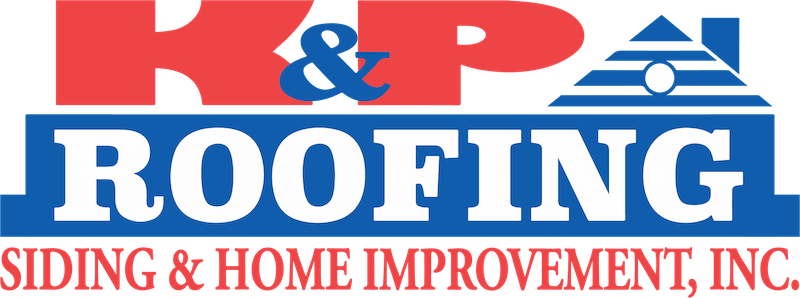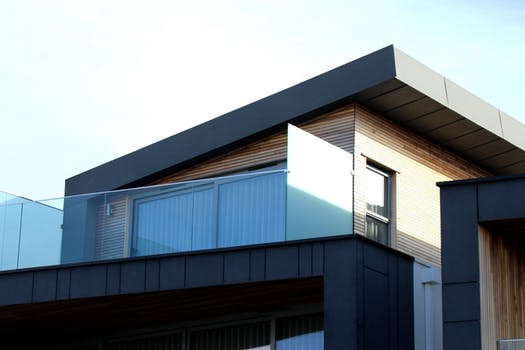Often times with project and repair quotes from skilled professionals the consumer is left with more questions than answers. Whether it be automotive repairs, plumbing issues, or electrician quotes the power and knowledge is always in the hands of the service provider. Here at K&P Roofing, Siding and Home Improvement, we like to remove the veil between the customer and service professional.
What determines roof replacement costs?
When you receive a roof repair or replacement quote there are many factors that come into play about how the contractor will price the job.
“1. Roof size
Roofers will take an accurate roof measurement based on square footage and then divide this number by 100, giving them what is called a roofing square. One roofing square equals 100 square feet. Most roofing materials are sold by the square, not the square foot.
2. Roof pitch or slope
The roof’s pitch is an important factor in determining roof cost for two reasons. First, a very steep roof, typically recognized as anything that’s more than 6:12 pitch, is generally considered not walkable and requires greater staging, safety and labor to complete the roof properly.
Second, depending on the type of roof being installed and the required fire rating, roof pitch determines the type of required underlayment system and thus plays a very important role in pricing a roofing job properly. For example, a composition shingle roof that is between 2:12 and 4:12 pitch requires two layers of underlayment installed, while a flat roof that is between a 1/2:12 and 2:12 pitch may require certain underlayments to achieve a Class A fire rating.
3. Type of roof being removed and number of layers
For the most part, roof tear-offs are determined by the amount of time it takes to remove — the labor — and the dump charges to dispose of the roofing material, which is typically determined by the weight of the material. The heavier the material or the more there is, the longer it takes to remove the old roof and the more it costs to dispose of properly.
RELATED: Recycling Old Shingles Benefits the Environment

The number of roof layers and the type of roofing material play into the cost of a new roof. (Photo courtesy of Angie’s List member Stephen K. of Secane, Pennsylvania)
4. Type of new roofing material
There are sizeable differences between types of roofing materials. The price of the roofing product being used plays a direct role in the aesthetic design, weight, durability and ultimate longevity of the new roofing system.
For sloped roofing products, asphalt composition shingles tend to be your entry level product, with dimensional lifetime shingle product options demanding an increased price. Concrete and clay tile tend to be more of a mid-range option with synthetic, wood shake, metal roofing and traditional slate being in the higher range roofing products. For flat roofs, pricing options tend to start with coatings, hot-mop built-up roofs, modified torches, TPO products and finally single-ply PVC systems.
5. Roofing system components installed
Most people think of their new roof simply as the new tile or shingle which is being applied; however, there is much more to waterproofing your roof over the long-term. The type of underlayment and decking materials used, the ventilation and insulation installed and even the types of fasteners applied all carry a different level of performance, longevity, manufacturing cost, and thus price.
6. Contractor’s roof access
Access to the roof is a critical aspect in the overall pricing of the job. Difficult access means additional equipment and labor are necessary to tear off the roof, load the roofing materials, stage the roof and complete the roof system. Since there is a direct correlation of labor and equipment costs to every roofing project, the easier the access, the less time and material are necessary to complete the job.

Tile roofing materials weigh more than asphalt shingles so they require more labor and initial cost; however, tile roofs last a long time when done right. (Photo courtesy of Angie’s List member Wally B. of St. Petersburg, Florida)
7. Type of roof warranty
There is a significant difference between a standard roofing warranty, where the roofing contractor is backing the labor and workmanship of the project, versus an extended or no-dollar-limit (NDL) warranty backed by the manufacturer themselves. A manufacturer’s warranty typically requires additional steps, materials and inspections along with a fee that is charged by the manufacturer to back and support the roofing contractor’s labor and workmanship.
A standard roofing warranty typically does not require the extra steps; however, you pay for what you get and should consider this difference when looking at bid comparisons. Manufacturer-warranted roof replacements typically feature higher quality workmanship, since they bring an added set of eyes on the inspection and ultimately more security and peace of mind to the consumer.
8. Additional roof details
Finally, there are finish details and prep details that absolutely affect the cost of the roofing job. For instance, the type and quality of the lumber being used for fascia and rafters, along with the finishing sealants and counter-flashing details all play a critical role in not only the look of your finished roof, but the cost you will pay.”-information provided by Angieslist


